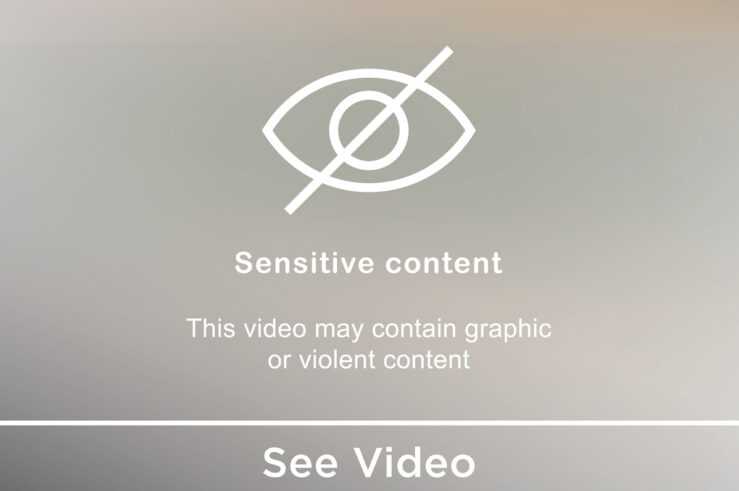Recently, the en banc Federal Circuit decided in Suprema, Inc. v. ITC that the International Trade Commission could properly prevent the importation of articles that infringe under an indirect liability theory. The core of the dispute in Suprema was whether § 337 of the Tariff Act’s prohibition against “importing articles that . . . infringe a valid and enforceable United States patent” could be used to prevent the importation of articles that at the moment of importation were not (yet) directly infringing. In essence, is the ITC limited to acting only when there is a direct infringement, or can it also prohibit articles involved in an indirect infringement scheme — in this case under an inducement theory?
TOTM’s own Alden Abbott posted his view of the decision, and there are a couple of points we’d like to respond to, both embodied in this quote:
[The ITC’s Suprema decision] would likely be viewed unfavorably by the Supreme Court, which recently has shown reluctance about routinely invoking Chevron deference … Furthermore, the en banc majority’s willingness to find inducement liability at a time when direct patent infringement has not yet occurred (the point of importation) is very hard to square with the teachings of [Limelight v.] Akamai.
In truth, we are of two minds (four minds?) regarding this view. We’re deeply sympathetic with arguments that the Supreme Court has become — and should become — increasingly skeptical of blind Chevron deference. Recently, we filed a brief on the 2015 Open Internet Order that, in large part, argued that the FCC does not deserve Chevron deference under King v. Burwell, UARG v. EPA and Michigan v. EPA (among other important cases) along a very similar line of reasoning. However, much as we’d like to generally scale back Chevron deference, in this case we happen to think that the Federal Circuit got it right.
Put simply, “infringe” as used in § 337 plainly includes indirect infringement. Section 271 of the Patent Act makes it clear that indirect infringers are guilty of “infringement.” The legislative history of the section, as well as Supreme Court case law, makes it very clear that § 271 was a codification of both direct and indirect liability.
In taxonomic terms, § 271 codifies “infringement” as a top-level category, with “direct infringement” and “indirect infringement” as two distinct subcategories of infringement. The law further subdivides “indirect infringement” into sub-subcategories, “inducement” and “contributory infringement.” But all of these are “infringement.”
For instance, § 271(b) says that “[w]hoever actively induces infringement of a patent shall be liable as an infringer” (emphasis added). Thus, in terms of § 271, to induce infringement is to commit infringement within the meaning of the patent laws. And in § 337, assuming it follows § 271 (which seems appropriate given Congress’ stated purpose to “make it a more effective remedy for the protection of United States intellectual property rights” (emphasis added)), it must follow that when one imports “articles… that infringe” she can be liable for either (or both) § 271(a) direct infringement or § 271(b) inducement.
Frankly, we think this should end the analysis: There is no Chevron question here because the Tariff Act isn’t ambiguous.
But although it seems clear on the face of § 337 that “infringe” must include indirect infringement, at the very least § 337 is ambiguous and cannot clearly mean only “direct infringement.” Moreover, the history of patent law as well as the structure of the ITC’s powers both cut in favor of the ITC enforcing the Tariff Act against indirect infringers. The ITC’s interpretation of any ambiguity in the term “articles… that infringe” is surely reasonable.
The Ambiguity and History of § 337 Allows for Inducement Liability
Assuming for argument’s sake that § 337’s lack of specificity leaves room for debate as to what “infringe” means, there is nothing that militates definitively against indirect liability being included in § 337. The majority handles any ambiguity of this sort well:
[T]he shorthand phrase “articles that infringe” does not unambiguously exclude inducement of post-importation infringement… By using the word “infringe,” § 337 refers to 35 U.S.C. § 271, the statutory provision defining patent infringement. The word “infringe” does not narrow § 337’s scope to any particular subsections of § 271. As reflected in § 271 and the case law from before and after 1952, “infringement” is a term that encompasses both direct and indirect infringement, including infringement by importation that induces direct infringement of a method claim… Section 337 refers not just to infringement, but to “articles that infringe.” That phrase does not narrow the provision to exclude inducement of post-importation infringement. Rather, the phrase introduces textual uncertainty.
Further, the court notes that it has consistently held that inducement is a valid theory of liability on which to base § 337 cases.
And lest you think that this interpretation would give some new, expansive powers to the ITC (perhaps meriting something like a Brown & Williamson exception to Chevron deference), the ITC is still bound by all the defenses and limitations on indirect liability under § 271. Saying it has authority to police indirect infringement doesn’t give it carte blanche, nor any more power than US district courts currently have in adjudicating indirect infringement. In this case, the court went nowhere near the limits of Chevron in giving deference to the ITC’s decision that “articles… that infringe” emcompasses the well-established (and statutorily defined) law of indirect infringement.
Inducement Liability Isn’t Precluded by Limelight
Nor does the Supreme Court’s Limelight v. Akamai decision present any problem. Limelight is often quoted for the proposition that there can be no inducement liability without direct infringement. And it does stand for that, as do many other cases; that point is not really in any doubt. But what Alden and others (including the dissenters in Suprema) have cited it for is the proposition that inducement liability cannot attach unless all of the elements of inducement have already been practiced at the time of importation. Limelight does not support that contention, however.
Inducement liability contemplates direct infringement, but the direct infringement need not have been practiced by the same entity liable for inducement, nor at the same time as inducement (see, e.g., Standard Oil. v. Nippon). Instead, the direct infringement may come at a later time — and there is no dispute in Suprema regarding whether there was direct infringement (there was, as Suprema notes: “the Commission found that record evidence demonstrated that Mentalix had already directly infringed claim 19 within the United States prior to the initiation of the investigation.”).
Limelight, on the other hand, is about what constitutes the direct infringement element in an inducement case. The sole issue in Limelight was whether this “direct infringement element” required that all of the steps of a method patent be carried out by a single entity or entities acting in concert. In Limelight’s network there was a division of labor, so to speak, between the company and its customers, such that each carried out some of the steps of the method patent at issue. In effect, plaintiffs argued that Limelight should be liable for inducement because it practised some of the steps of the patented method, with the requisite intent that others would carry out the rest of the steps necessary for direct infringement. But neither Limelight nor its customers separately carried out all of the steps necessary for direct infringement.
The Court held (actually, it simply reiterated established law) that the method patent could never be violated unless a single party (or parties acting in concert) carried out all of the steps of the method necessary for direct infringement. Thus it also held that Limelight could not be liable for inducement because, on the facts of that case, none of its customers could ever be liable for the necessary, underlying direct infringement. Again — what was really at issue in Limelight were the requirements to establish the direct infringement necessary to prove inducement.
On remand, the Federal Circuit reinforced the point that Limelight was really about direct infringement and, by extension, who must be involved in the direct infringement element of an inducement claim. According to the court:
We conclude that the facts Akamai presented at trial constitute substantial evidence from which a jury could find that Limelight directed or controlled its customers’ performance of each remaining method step. As such, substantial evidence supports the jury’s verdict that all steps of the claimed methods were performed by or attributable to Limelight. Therefore, Limelight is liable for direct infringement.
The holding of Limelight is simply inapposite to the facts of Suprema. The crux of Suprema is whether the appropriate mens rea existed to support a claim of inducement — not whether the requisite direct infringement occurred or not.
The Structure of § 337 Supports The ITC’s Ability to Block Inducement
Further, as the majority in Suprema notes, the very idea of inducement liability necessarily contemplates that there will be a temporal separation between the event that gives rise to indirect liability and the future direct infringement (required to prove inducement). As the Suprema court briefly noted “Section 337(a)(1)(B)’s ‘sale . . . after importation’ language confirms that the Commission is permitted to focus on post-importation activity to identify the completion of infringement.”
In particular, each of the enforcement powers in § 337(a) contains a clause that, in addition to a prohibition against, e.g., infringing articles at the time of importation, also prohibits “the sale within the United States after importation by the owner, importer, or consignee, of articles[.]” Thus, Congress explicitly contemplated that the ITC would have the power to act upon articles at various points in time, not limiting it to a power effective only at the moment of importation.
Although the particular power to reach into the domestic market has to do with preventing the importer or its agent from making sales, this doesn’t undermine the larger point here: the ITC’s power to prevent infringing articles extends over a range of time. Given that “articles that … infringe” is at the very least ambiguous, and, as per the Federal Circuit (and our own position), this ambiguity allows for indirect infringement, it isn’t a stretch to infer that that Congress intended the ITC to have authority under § 337 to ban the import of articles that induce infringement that occurs only after the time of importation..
To interpret § 337 otherwise would be to render it absurd and to create a giant loophole that would enable infringers to easily circumvent the ITC’s enforcement powers.
A Dissent from the Dissent
The dissent also takes a curious approach to § 271 by mixing inducement and contributory infringement, and generally making a confusing mess of the two. For instance, Judge Dyk says
At the time of importation, the scanners neither directly infringe nor induce infringement… Instead, these staple articles may or may not ultimately be used to infringe… depending upon whether and how they are combined with domestically developed software after importation into the United States (emphasis added).
Whether or not the goods were “staples articles” (and thus potentially capable of substantial noninfringing uses) has nothing to do with whether or not there was inducement. Section 271 makes a very clear delineation between inducement in § 271(b) and contributory infringement in § 271(c). While a staple article of commerce capable of substantial noninfringing uses will not serve as the basis for a contributory infringement claim, it is irrelevant whether or not goods are such “staples” for purposes of establishing inducement.
The boundaries of inducement liability, by contrast, are focused on the intent of the actors: If there is an intent to induce, whether or not there is a substantial noninfringing use, there can be a violation of § 271. Contributory infringement and inducement receive treatment in separate paragraphs of § 271 and are separate doctrines comprising separate elements. This separation is so evident on the face of the law as well as in its history that the Supreme Court read the doctrine into copyright in Grokster — where, despite a potentially large number of non-infringing uses, the intent to induce infringement was sufficient to find liability.
Parting Thoughts on Chevron
We have some final thoughts on the Chevron question, because this is rightly a sore point in administrative law. In this case we think that the analysis should have ended at step one. Although the Federal Circuit began with an assumption of ambiguity, it was being generous to the appellants. Did Congress speak with clear intent? We think so. Section 271 very clearly includes direct infringement as well as indirect infringement within its definition of what constitutes infringement of a patent. When § 337 references “articles … that infringe” it seems fairly obvious that Congress intended the ITC to be able to enforce the prohibitions in § 271 in the context of imported goods.
But even if we advance to step two of the Chevron analysis, the ITC’s construction of § 337 is plainly permissible — and far from expansive. By asserting its authority here the ITC is simply policing the importation of infringing goods (which it clearly has the power to do), and doing so in the case of goods that indirectly infringe (a concept that has been part of US law for a very long time). If “infringe” as used in the Tariff Act is ambiguous, the ITC’s interpretation of it to include both indirect as well as direct infringement seems self-evidently reasonable.
Under the dissent’s (and Alden’s) interpretation of § 337, all that would be required to evade the ITC would be to import only the basic components of an article such that at the moment of importation there was no infringement. Once reassembled within the United States, the ITC’s power to prevent the sale of infringing goods would be nullified. Section 337 would thus be read to simply write out the entire “indirect infringement” subdivision of § 271 — an inference that seems like a much bigger stretch than that “infringement” under § 337 means all infringement under § 271. Congress was more than capable of referring only to “direct infringement” in § 337 if that’s what it intended.
Much as we would like to see Chevron limited, not every agency case is the place to fight this battle. If we are to have agencies, and we are to have a Chevron doctrine, there will be instances of valid deference to agency interpretations — regardless of how broadly or narrowly Chevron is interpreted. The ITC wasn’t making a power grab in Suprema, nor was its reading of the statute unexpected, inconsistent with its past practice, or expansive.
In short, Suprema doesn’t break any new statutory interpretation ground, nor present a novel question of “deep economic or political significance” akin to the question at issue in King v. Burwell. Like it or not, there will be no roots of an anti-Chevron-deference revolution growing out of Suprema.





